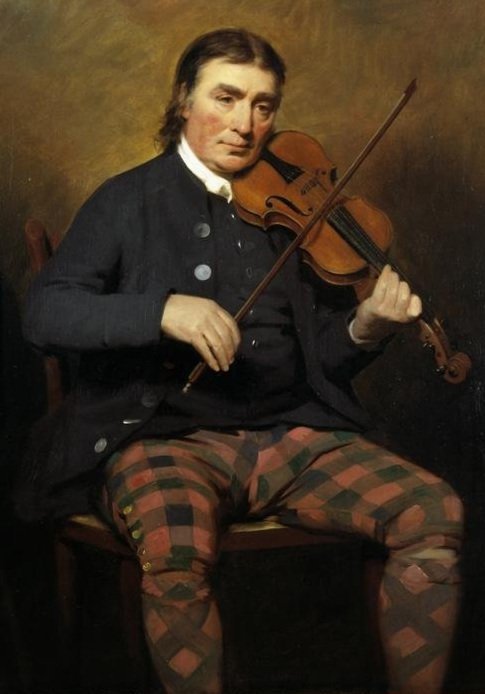Niel Gow’s Lament for the Death of His Second Wife – Nathaniel Gow (1727-1807)
The most famous Scottish fiddler of the 18th century, Nathaniel Gow, composed eighty seven fiddle tunes in his lifetime that became staples of Scottish country dance music. Niel was actually recognized as a legend during his lifetime (a rare occurrence for artist types) and considered the best fiddler in his home county of Perthshire, a region in Scotland known for its musicians.
Niel was first married to Margaret Wiseman, with whom he had four children. His son Nathaniel was another famous composer and fiddler in his own right. Middle-aged, widowed Niel married Margaret Urquhart after his first wife’s death and enjoyed a happy marriage with her until her death when he was 78.
The heartbroken fiddler put down his instrument after his wife’s passing, and was only persuaded to return to playing and composing fiddle tunes at the insistence of his family. He composed his “Lament to the Death of His Second Wife” upon returning to his instrument. The yearning and bittersweet quality of the air attests to the depth of his grief and love for Margaret.
There is another interpretation of the title of this work that is more humorous, albeit less romantic. Some say that Nathaniel dropped his beloved fiddle and that the lament he composed was for his shattered violin! The title makes this particular interpretation even more tongue-in-cheek – Niel may have had a wife, but he was eternally married to his fiddle.
Regardless of its inspiration, this fiddle tune is beloved for its tenderness, beauty and sweet longing.
Niel Gow’s Lament, for two violins and harp
Notice the differences in the two performances of the fiddle tune. I would consider both performances to be faithful to the spirit of the original Scottish folk melody, but they bring out slightly different aspects of the fiddle tune both historically and artistically.
The first performance by the trio is a traditional Scottish ensemble – two violins and a harp – and the trio performs the sweet lament in the original Scottish concert hall, the pub! I think of this performance as capturing more of the simple, air quality of the original fiddle tune. The unusual instrumentation is true-to-life. A pickup ensemble, whether in 18th century Scotland in a pub, or in modern-day America or Scotland (also, probably, in a pub!) would be composed of whatever instruments the participants present that day knew how to play.
The second performance by Voices of Music is perhaps a more “classicized” version of the fiddle tune, but uses original instruments that Niel Gow would have heard in his time. If you found yourself in 17th-18th century Scotland, you might have heard Baroque-tuned violins, a viola de gamba (so named for the way you hold it, with your legs [gamba in Italian]), and a drum (it looks similar to the bodhran, which is common in Celtic tunes) in a given performance.
This particular ensemble, Voices of Music (one of my favorites!) also adds an archlute (the guitar-looking instrument on the right) and a harpsichord for an extra Baroque spin. This performance is more majestic and feels more “orchestrated” than the one in the humble pub. It nods to the harmonic beauty in this piece as well as the mastery of the violin – a skill for which Nathaniel Gow was legendary.

